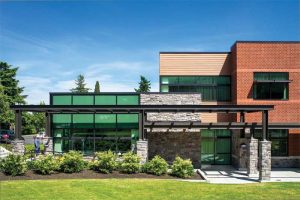
By Richard Martens
Sustainability is a complex topic in all fields; every initiative seeking to improve sustainability brings both improvements and setbacks. Construction is no different. Products and construction methodologies that provide immediate reductions in embodied carbon must be weighed against building longevity, lifecycle cost, energy consumption, and a host of other variables. Holistic understanding of environmental impacts is not easy to develop.
These challenges play out across the construction industry. While everyone can agree on the virtue of recycling materials, building product manufacturers cannot allow aesthetics, performance, longevity or availability of their products to be compromised by raw materials.
Within modern construction, there is an exception to the inherent complexity of sustainability comparisons. Preventing air from traveling through the building enclosure in an uncontrolled manner provides unequivocal benefits:
- Energy savings1: A tighter building envelope with reduced air leakage can result in lower energy consumption for heating and cooling. By minimizing the uncontrolled exchange of indoor and outdoor air, the need for conditioning the incoming air is reduced, leading to energy savings. This has been studied in depth and reported on by the U.S. Army Corps of Engineers (USACE).2
- Improved thermal comfort3: Reducing air leakage contributes to maintaining more consistent indoor temperatures. A tighter building envelope reduces drafts, cold spots, and heat loss, enhancing occupant comfort and safety by minimizing temperature variations and improving overall thermal performance.
- Enhanced indoor air quality4: By limiting the infiltration of outdoor air, a tighter building envelope helps control the entry of pollutants, allergens, and particulate matter into the indoor environment. This can lead to improved indoor
air quality (IAQ), reducing health risks, and creating a healthier living or working environment. - Moisture control5: Minimizing air leakage can help prevent the entry of moisture-laden outdoor air, which can lead to issues such as condensation, mold growth, and moisture-related damage.
- Noise reduction6: Air leakage through the building envelope can allow the transmission of external noise into the interior spaces. By reducing air leakage, the infiltration of noise can be minimized, resulting in quieter indoor environments that promote occupant comfort and well-being.
- Increased HVAC system efficiency7: With reduced air leakage, HVAC systems can operate more efficiently. A tighter building envelope reduces the load on HVAC equipment, allowing for better control of IAQ, improved thermal distribution, and optimized energy performance of the HVAC system.
- Carbon footprint reduction: Lowering air leakage in the building envelope reduces the overall energy demand for space conditioning. By decreasing energy consumption, the carbon footprint of the building is reduced, contributing to environmental sustainability and potentially meeting energy efficiency goals or green building certifications.
The big environmental win from high-performance air barriers comes from the simple fact that once an air barrier system has been specified, its effectiveness comes from attention to detail and not from more intensive consumption of building materials.




